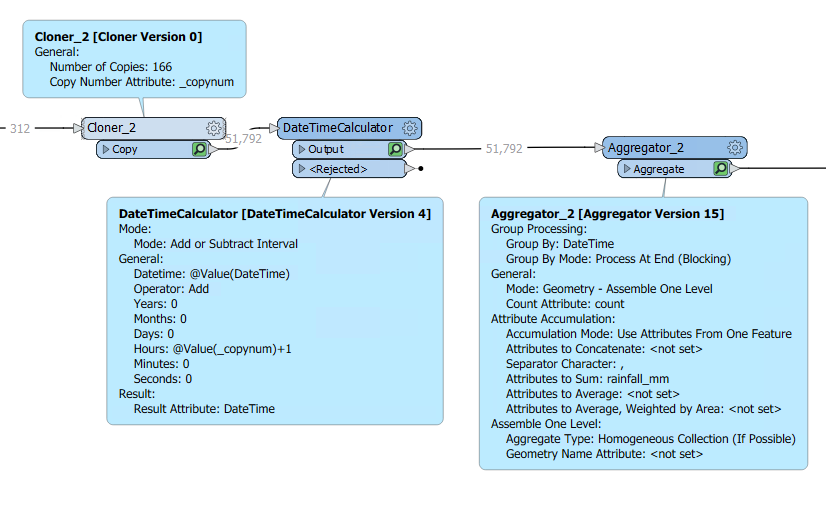Hi,
I have hourly rainfall data (observed and forecast) and i'd like to calculate a 7 day preceding rainfall total for EACH HOUR. My first thought is to use AttributeManager and adjacent features to sum the preceding 166 features (hourly rainfall totals), but it only allows up to 100 adjacent features. Any help would be greatly appreciated!
Thanks.










 (Also you have one duplicate data point in your sample, not sure if you are aware)
(Also you have one duplicate data point in your sample, not sure if you are aware)